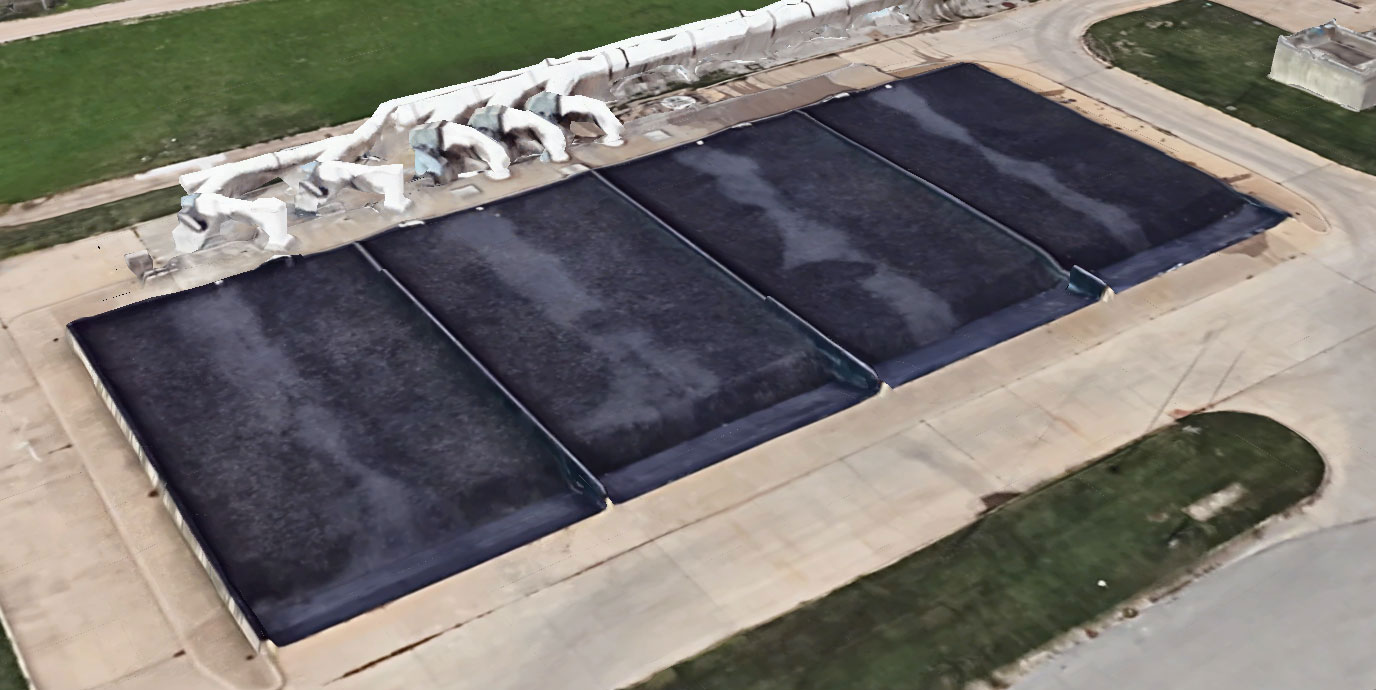
Improper moisture control can lead to dry spots in the media bed.
Maintaining the right moisture balance is essential for optimal biofilter function. Too little moisture hinders biological activity, while excess moisture leads to anaerobic zones and disrupts airflow. Effective moisture management ensures efficiency and long-term performance.
Using Secondary Effluent for Moisture Control
Secondary effluent is preferred over potable water for biofilter systems, as it contains essential residual nutrients that support biological activity.
- Tertiary effluent is best suited for humidification applications since it has minimal residual nutrients and BOD, limiting biomass accumulation in humidification chambers.
- Secondary effluent can be used in humidification but may lead to excessive biomass buildup on packing materials, requiring more frequent maintenance.
Maximum Allowable Secondary Effluent Specifications:
| Free Chlorine: <5 ppm |
| Total Suspended Solids (TSS) <15 ppm |
| Total Nitrogen: ≤30 ppm (minimum of 30 ppm as NH4) |
| Phosphorus: ≤80 ppm |
| Magnesium: ≤10 ppm |
| Water Hardness: <50 ppmv |
| BOD: ≤15 mg/L |
| COD: ≤50 mg/L |
Critical Biofilter Design Components
1. Pre-Humidification
Adding moisture to the air before it enters the biofilter is essential for maintaining microbial activity. This is typically achieved using:
- Wet scrubbers or fine-mist nozzles to facilitate countercurrent flow between water and air.
- Stream injection, which is highly effective for achieving near 100% relative humidity when necessary.
- Strainers and water softeners to prevent clogging and maintain system efficiency.
2. Surface Irrigation
Even with pre-humidification, biofilter media can dry over time. Surface irrigation ensures uniform moisture distribution through:
- Sprinklers or spray nozzles, depending on the biofilter configuration.
- Overlapping spray patterns to prevent dry spots and water pooling.
- Regular system monitoring to maintain consistent moisture levels.
3. Subsurface Drip Irrigation
Delivering water directly to the lower sections of the media supports biological activity where it’s most concentrated.
- Drip or soaker hoses are laid horizontally to ensure even distribution.
- Non-clogging orifices prevent blockages and maintain steady irrigation.
Both pre-humidification and irrigation are critical for maintaining the ideal moisture balance, ensuring efficient biological processes and effective odor control.
Preconditions for a Healthy Biofilter Ecosystem
Biofilters rely on microorganisms to break down odors—not just the media itself. A healthy ecosystem requires:
- Foul air (Food Sources) to sustain microbial life.
- Essential nutrients to support biological activity.
- Balanced airflow through proper fan and damper adjustments.
- Calibrated air, water, and irrigation flow rates to maintain system stability.
- Pressure-drop monitoring to ensure optimal performance.
- A minimum six-week acclimation period for microbial adaptation to the process air stream.
A well-balanced system is essential to achieving engineering design performance standards and long-term operational success.